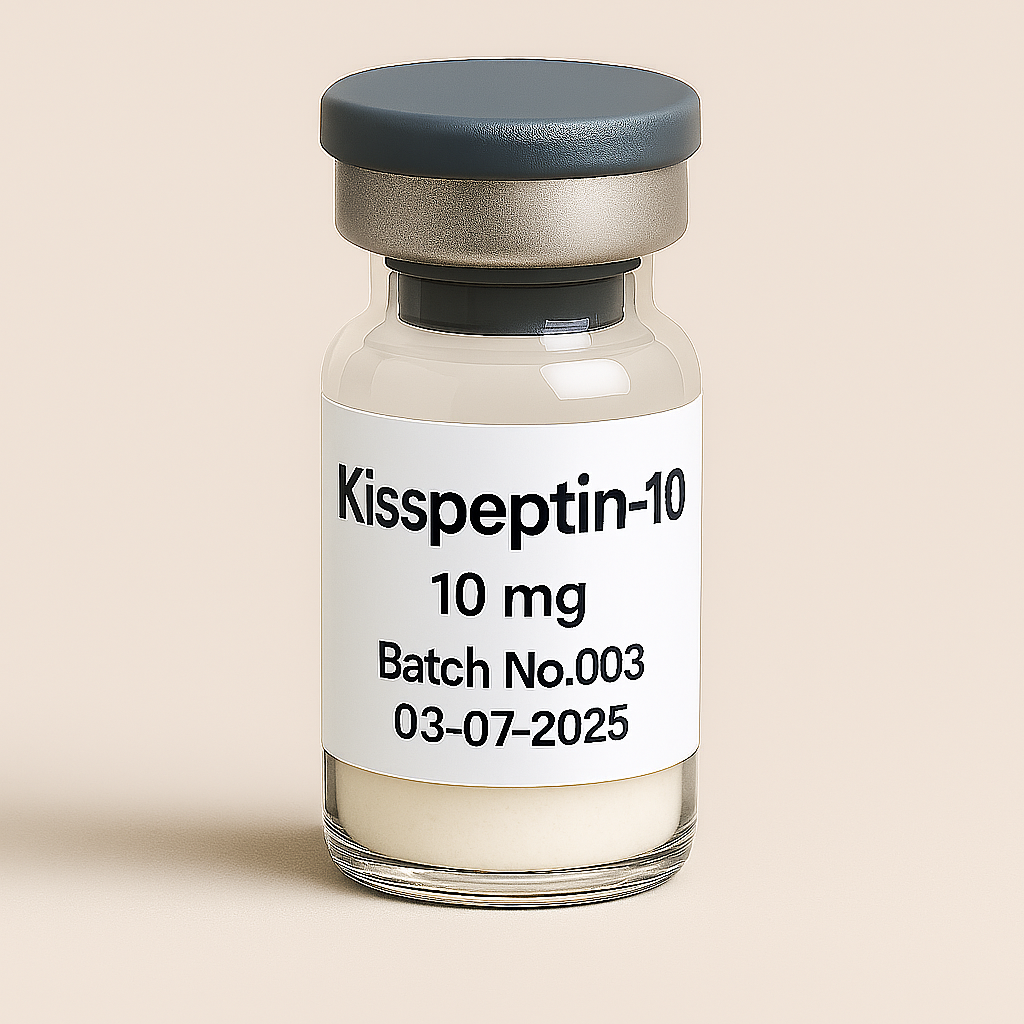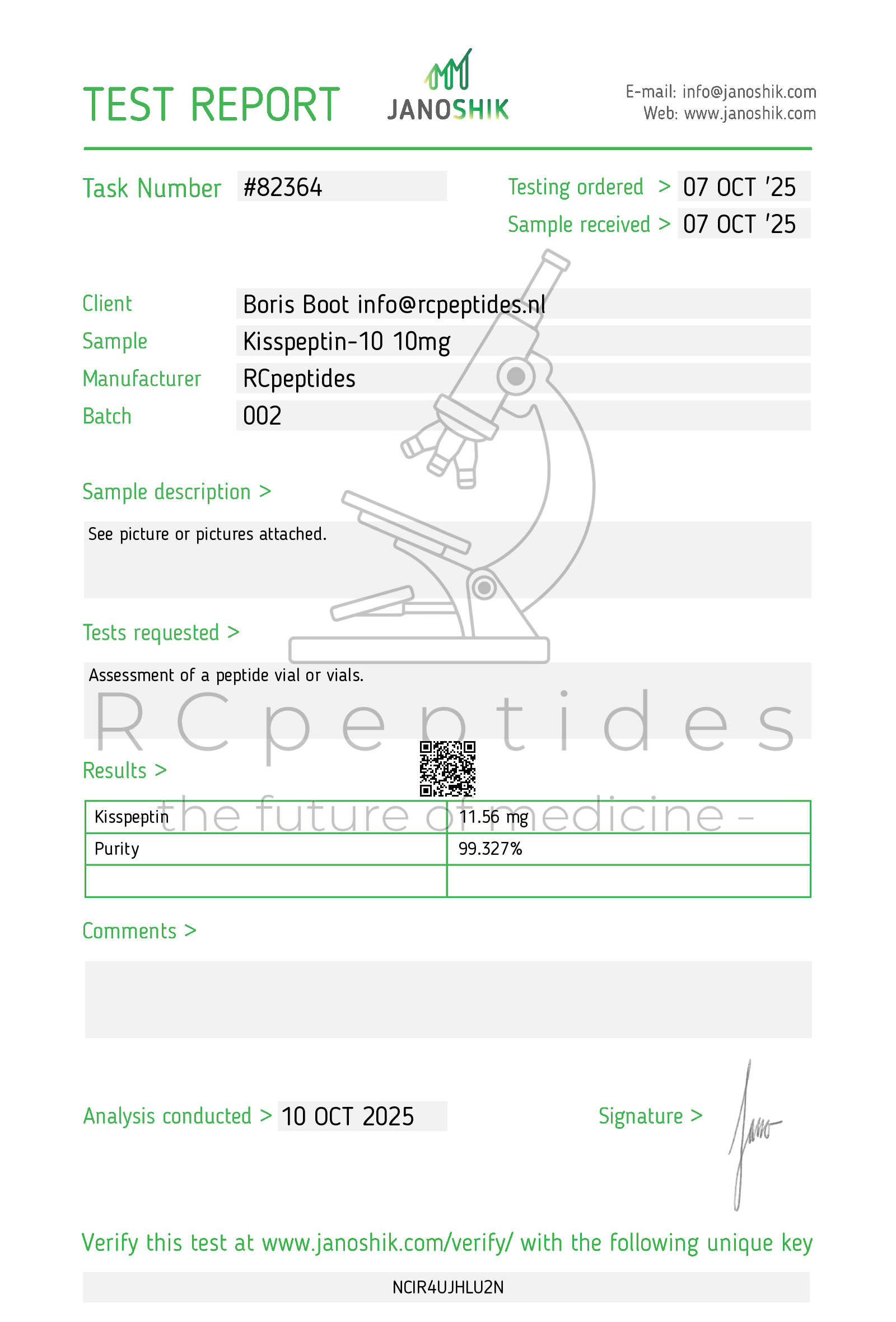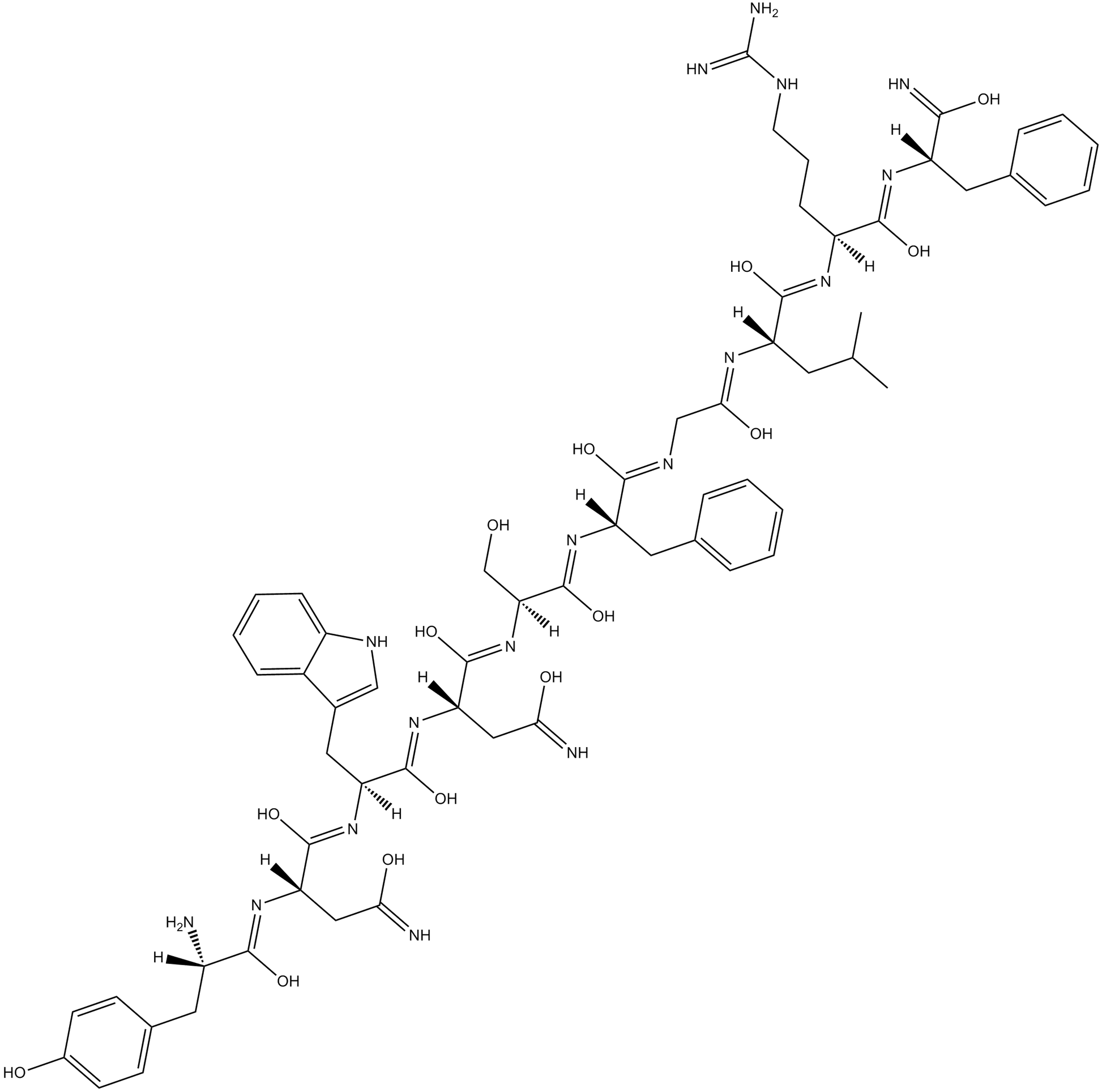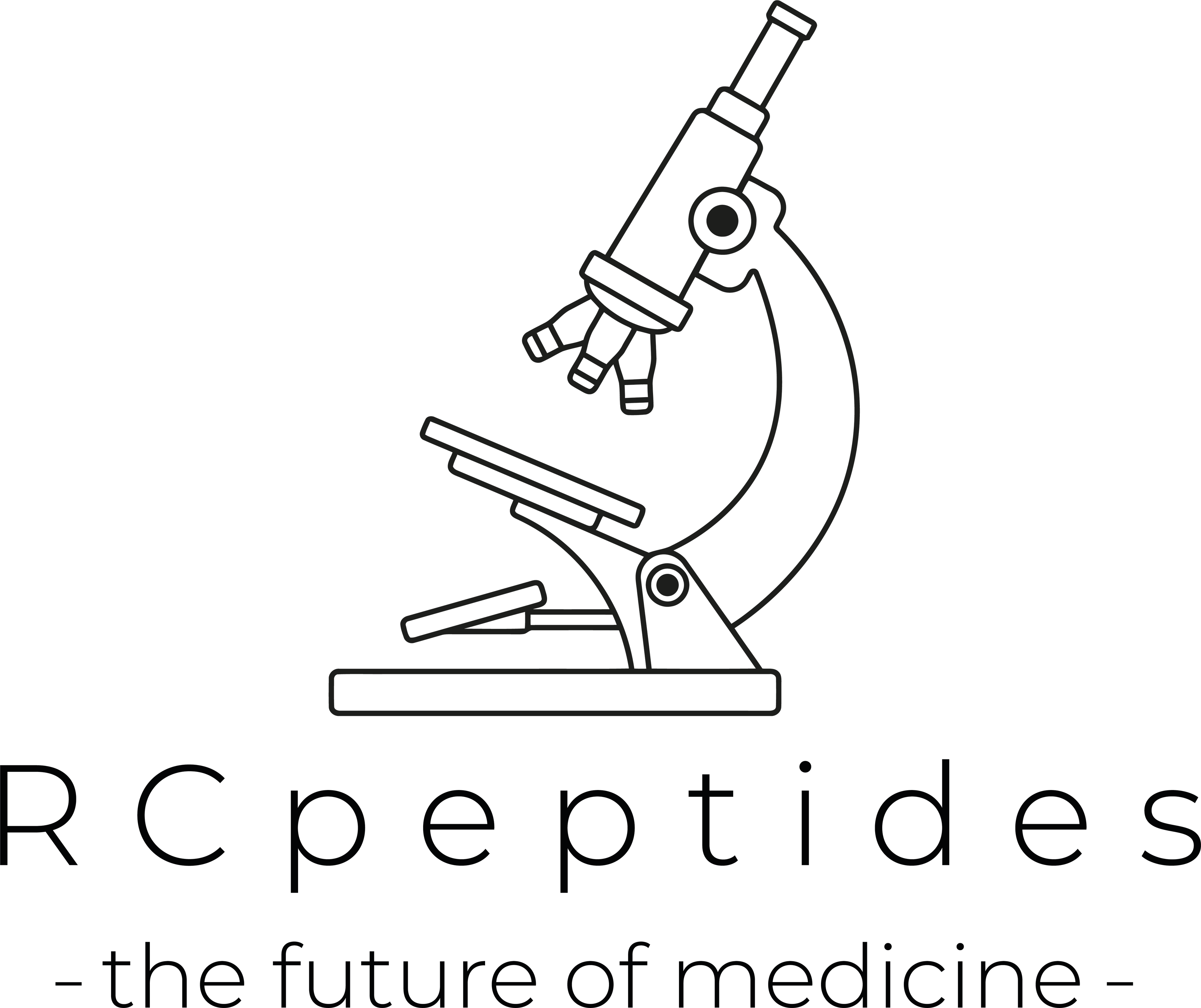
Kisspeptin-10 10mg vial
Ritiro non disponibile al momento
NOT FOR HUMAN CONSUMPTION
Kisspeptin-10 is a short peptide fragment derived from the larger kisspeptin family, which plays a crucial role in regulating the reproductive system. It is a potent activator of the hypothalamic-pituitary-gonadal (HPG) axis, stimulating the release of gonadotropin-releasing hormone (GnRH), which in turn regulates luteinizing hormone (LH) and follicle-stimulating hormone (FSH) secretion.
Mechanism of Action
Kisspeptin-10 binds to the KISS1 receptor (GPR54) in the hypothalamus, leading to:
- Increased GnRH secretion → Stimulates the anterior pituitary.
- Release of LH & FSH → Essential for testosterone and estrogen production.
- Enhanced fertility & puberty regulation → Critical in the onset of puberty and reproductive function.
Unlike synthetic hormones or exogenous testosterone, Kisspeptin-10 enhances natural hormone production without suppressing endogenous feedback mechanisms.
Uses and Potential Benefits
-
Fertility & Reproductive Health
- Stimulates ovulation in women.
- Increases sperm production and testosterone in men.
- Potential treatment for hypogonadotropic hypogonadism (low GnRH/LH levels).
-
Libido and Sexual Function
- Enhances sexual desire and arousal.
- Works synergistically with other peptides like PT-141 (Bremelanotide).
-
Puberty Regulation
- Used in research for delayed or precocious (early) puberty.
- Helps restore natural puberty in KISS1/GPR54 deficiency disorders.
-
Neuroprotective & Metabolic Effects
- May influence energy balance and appetite regulation.
- Shows promise in preventing neurodegenerative diseases like Alzheimer’s.
-
Potential Anti-Cancer Properties
- Originally discovered as a metastasis suppressor gene (KISS1), inhibiting tumor spread in certain cancers.
Dosage & Administration
- Common Route: Subcutaneous injection.
- Typical Dosage: Research suggests 50–100 mcg per injection, but human studies are limited.
- Timing: Often administered pre-bedtime or pre-sexual activity for libido effects.
Side Effects & Risks
- Mild Side Effects: Nausea, dizziness, temporary flushing.
- Potential Hormonal Imbalances: Overuse could lead to excessive LH/FSH production.
-
Unknown Long-Term Effects: More clinical trials are needed
Clinical Research & Legality
- Currently under research for fertility treatments and neuroendocrine disorders.
- Not FDA-approved for general medical use but available in research settings.
References
-
Oakley, A. E., Clifton, D. K., & Steiner, R. A. (2009). Kisspeptin signaling in the brain. Endocrine Reviews, 30(6), 713-743.
-
Dhillo, W. S., Chaudhri, O. B., Patterson, M., Thompson, E. L., Murphy, K. G., Badman, M. K., ... & Bloom, S. R. (2005). Kisspeptin-54 stimulates the hypothalamic-pituitary-gonadal axis in human males. Journal of Clinical Endocrinology & Metabolism, 90(12), 6609-6615.
-
Jayasena, C. N., Comninos, A. N., & Dhillo, W. S. (2014). Kisspeptins and the control of gonadotropin secretion in humans. Peptides, 56, 34-40.
-
George, J. T., Anderson, R. A., Millar, R. P., & Tena-Sempere, M. (2012). Kisspeptin-10 is a potent stimulator of the hypothalamic-pituitary-gonadal axis in women. Journal of Clinical Endocrinology & Metabolism, 97(10), 3629-3636.



